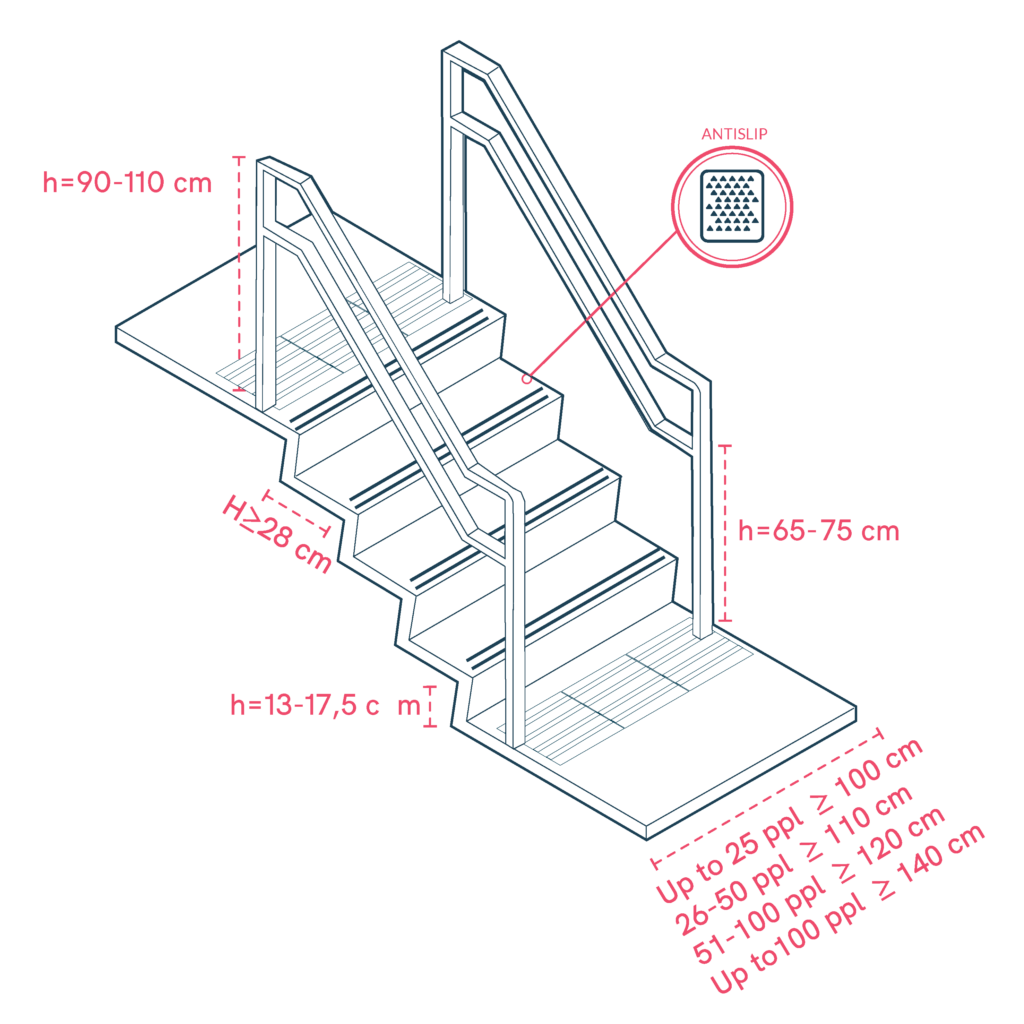Safety on stairs
To ensure safety and accessibility, stairs should include handrails for support. Any stairs taller than 55 cm must have handrails, with both sides covered if the stairs are wide or there is no elevator. For very wide stairs, additional handrails may be needed in the middle. Handrails should be sturdy, easy to grip, and allow smooth hand movement. Additionally, tactile indicator bands should be placed at the top and bottom of the stairs, with a color contrast marking the first and last step, as well as the handrails and surfaces that enclose the stairway.

- All stairs over 55 cm must have handrails.
- Stairs wider than 1.2 meters or without elevators need handrails on both sides.
- For stairs over 4 meters, extra handrails may be needed in the middle.
- In public spaces, handrails should extend 30 cm beyond the top and bottom.
- In healthcare settings, handrails should be continuous and extend 30 cm on both sides.
- For schools, add a lower handrail for children.
- Handrails should be sturdy, easy to grip, 4 cm from the wall, and smooth for easy movement.
- Add tactile indicator bands at the top and bottom of the stairs.
- Use color contrast to highlight the first and last step, handrails, and enclosed surfaces.
Sources
- https://accessible-eu-centre.ec.europa.eu/content-corner/digital-library/en-172102021-accessibility-and-usability-built-environment-functional-requirements_en
- https://www.access-board.gov/adaag-1991-2002.html#2.%20GENERAL
- https://universaldesign.ie/built-environment/building-for-everyone/building-for-everyone-full-series
- https://www.codigotecnico.org/pdf/Documentos/SUA/DccSUA.pdf
- Carers
- Children
- Cognitive
- Cognitive abilities
- Decolonial perspective
- Digital
- Digital barrier
- Enviroment
- Environmental
- Gender and generations
- Gender perspective
- Hearing impairment
- Low-education
- Low-income
- Older people
- Other
- Physical abilities and features
- Sensory and Physical
- Socioeconomic
- Visual impairment